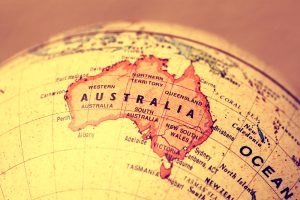In the past week Australia has made two direct investments in global stability. The first was a sum of $8.3 million to meet urgent humanitarian needs in Bangladesh and Myanmar following Tropical Cyclone Mocha. The second was a new $73.5 million assistance package for Ukraine in aid in its defense against Russia’s invasion. Both these investments signal Australia’s intent to be a responsible international actor, but both also reveal that Canberra’s strategic priorities may be less focused on the fault lines in its neighborhood than it should be.
Australia’s recently released Defense Strategic Review 2023 identified the northeast Indian Ocean as part of Australia’s “immediate region,” alongside its traditional neighborhood of Southeast Asia and the Pacific. This widening of Australia’s strategic lens is primarily driven by a desire to forge a closer security and economic relationship with India, and a recognition of the critical importance of Indian Ocean sea lanes.
The northeast Indian Ocean’s current major destabilizing forces are the civil war in Myanmar and the refugee crisis in Bangladesh. Tropical Cyclone Mocha, intensified by climate change, added an extra layer of complexity to these problems. Australia’s humanitarian assistance package is primarily directed to communities in Myanmar, and is being channeled through the United Nations and trusted non-government organizations to ensure that the military government does not benefit or draw legitimacy from the assistance.
In the 2022-2023 period, Australia’s total humanitarian assistance in Myanmar and Bangladesh now stands at $96 million. This has undoubtedly provided some much needed help to those in desperate need. However, of the latest assistance package only $1.3 million has been directed toward Bangladesh. While fears of devastating consequences for the refugee camps in Cox’s Bazar were fortunately avoided, the assistance Bangladesh requires with these camps is considerable.
Bangladesh is currently carrying a great burden for the world, with close to 1 million Rohingya refugees having been forced into the country. Countries with the ability to resettle refugees, like Australia, have been reluctant to do so with the Rohingya. Since 2008, Australia has granted refugee visas to less than 500 Rohingya. The permanency of the world’s largest refugee camp is not viable and has the potential to create further destabilization in the region.
Greater humanitarian assistance – including a more substantial resettlement of refugees – presents an opportunity to not only invest in the stability of the region, but to build goodwill and habits of cooperation with a country that Australia may be overlooking.
When viewed outside of comparison to its gigantic neighbor in India, Bangladesh has significant weight that should warrant greater attention in Canberra. It’s a country of 170 million people whose development trajectory in recent decades has been incredibly positive, with a major reduction in poverty and a per capita income that has moved past both India and Pakistan. There is an opportunity to transform cooperative humanitarian links into a strong economic relationship in the way Canberra has successfully done with Vietnam.
Australia’s other recent investment in global stability is a new military package for Ukraine. This package has been criticized as offloading hardware that the Australian military no longer has use for, and for ignoring Ukraine’s specific requests for more modern equipment. However, it is still a demonstration that Canberra sees repelling Russia’s invasion as a critically important issue for Australia’s national interest.
Russia is not a threat to Indo-Pacific stability in any direct sense (despite its Pacific coast), but it is in the realm of ideas. What Russia can and can’t get away with provides lessons for any potential challenges to the status quo within the Indo-Pacific. While recognizing the absolute importance of Ukraine’s defense in and of itself, Canberra is primarily concerned with the calculations Beijing draws from the invasion.
Recent events in Russia prove that invasions can also be internally destabilizing forces, alongside the external havoc they create. As a political party chiefly concerned with its own internal grip on power, the Chinese Communist Party may now be more wary of the unknown unknowns that war can unleash. Australia’s contributions to Ukraine’s war efforts are therefore doubt-sowing measures – inputs, no matter how small, into influencing Beijing’s restraint.
Of course, these two recent investments Australia has made are not an either/or proposition. Australia has the resources and capabilities to be engaged in multiple regions of the world simultaneously. It is also a country with global interests that it needs to consider. Yet the conflict in Ukraine may not be as important to Australia’s long-term interests as insecurity in Myanmar and Bangladesh.
Ukraine dominates the media landscape in a way that Myanmar’s civil war and the refugee crisis in Bangladesh don’t. This has a profound impact on what we consider to be the more pressing concerns. Yet for Australia to truly see the northeast Indian Ocean as its immediate region – and to align itself more closely with ASEAN’s primary interests – its investments in local stability may need to be its priority.
































